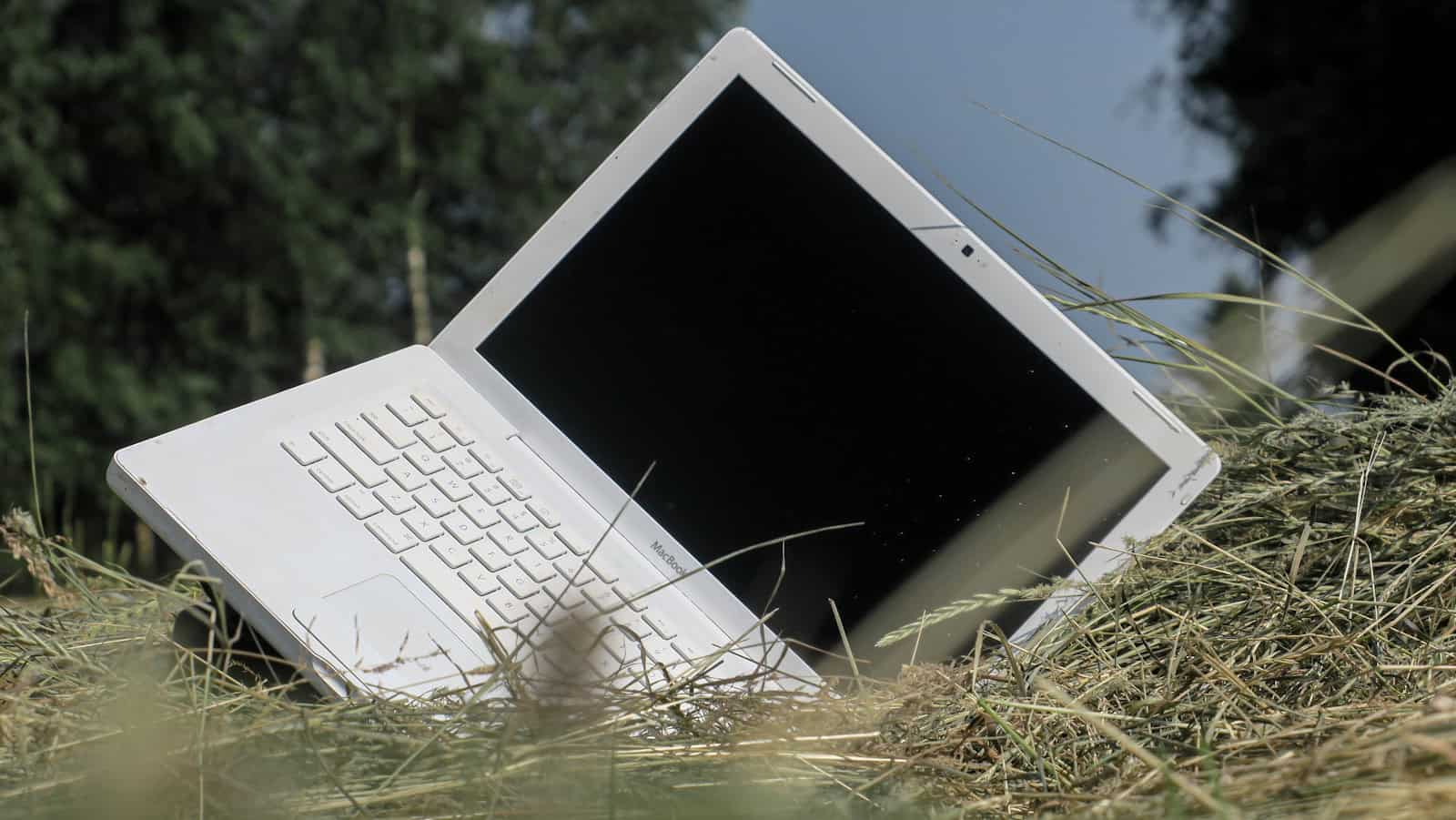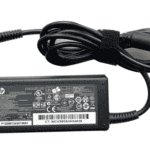Losing a laptop can be stressful and scary. Whether it was left behind at a coffee shop or stolen from your home, the feeling of panic is the same. Your personal files, work documents, and even banking information could be at risk. But don’t worry too much yet.
The best way to find a lost or stolen laptop is to use tracking software that was already installed on your device. Most Windows laptops have a built-in “Find My Device” feature that shows the last known location when you sign into your Microsoft account. This simple tool can help you locate your computer quickly if it’s still connected to the internet.
If your laptop is truly gone, you should contact the police right away. Give them the serial number and any unique features of your device. Also check with nearby pawn shops, as stolen electronics often end up there. While it might seem hopeless, taking quick action increases your chances of getting your laptop back.
Here are the essential steps to find a lost or stolen laptop, whether you’re using a Windows PC, MacBook, or another device:
🧭 How to Find a Lost or Stolen Laptop
1. Act Quickly
The sooner you start tracking or securing your laptop, the better your chances of recovery. Don’t delay—act within hours of realizing it’s missing.
2. Use Built-in Tracking Features
For Windows Laptops:
- Go to account.microsoft.com/devices.
- Sign in with the Microsoft account linked to your lost PC.
- Select your laptop, then choose “Find my device.”
- It will display the last known location if location services were enabled.
For MacBooks:
- Go to iCloud.com/find or use the Find My app on another Apple device.
- Sign in with your Apple ID.
- Select your Mac under Devices to see its location.
- You can also choose “Mark as Lost” or “Erase Mac” if needed.
3. Report the Loss to Authorities
- File a police report, especially if you have a serial number or tracking data.
- Provide details such as make, model, color, and any identifying stickers or serial numbers.
- If the laptop contains sensitive data, let them know—it may raise its priority.
4. Alert Your Employer or School (if applicable)
If it’s a work or school laptop, notify the IT department immediately. They may have remote tracking, remote wipe, or administrative tools to help recover or secure it.
5. Check with Local Lost & Found
- If you lost the laptop in a public place (library, airport, coffee shop), contact their lost & found department.
- Leave your contact info and a description of the device.
6. Change Your Passwords Immediately
- Log into key accounts (email, banking, cloud storage, etc.) from another device.
- Change your passwords to protect sensitive information.
- Enable two-factor authentication (2FA) where possible.
7. Use Third-Party Tracking Software (If Installed)
If you previously installed tools like:
- Prey
- LoJack for Laptops
- Absolute
- Cerberus (for Linux/Android hybrids)
Log in to those services and use their location tools, screenshots, webcam photos, and remote wipe functions.
8. Check Online Marketplaces
Monitor Craigslist, eBay, Facebook Marketplace, and OfferUp for listings matching your device. If you find it, do not attempt to recover it yourself—contact authorities.
9. Notify Your Insurance
- If you have renters, homeowners, or device insurance (including AppleCare+ Theft and Loss), start a claim.
- Provide a police report, proof of purchase, and device details.
10. Track Activity Using Google (if signed in)
- Go to Google My Activity to see if there’s any recent activity from your account on the lost laptop.
- Check Google Maps Timeline to view location history if location tracking was enabled.
11. Prepare for Next Time
If the laptop isn’t recovered:
- Activate tracking services on your replacement device.
- Keep a record of your laptop’s serial number.
- Use full disk encryption and a strong login password.
- Back up data regularly to the cloud or external drive.
Taking these steps quickly and methodically gives you the best shot at recovering your device or at least protecting your personal data.
Key Takeaways
- Enable tracking software before a loss occurs to increase recovery chances dramatically.
- Report the theft to police immediately and provide your laptop’s serial number and description.
- Change all your passwords and lock your accounts to protect your personal information from theft.
Understanding Laptop Security
Laptop security involves both physical protection and digital measures to safeguard your device from theft and unauthorized access. Taking the right steps before a loss occurs dramatically increases your chances of recovery.
Risk Factors for Lost or Stolen Laptops
Laptops are prime targets for theft due to their high value and portability. Common risk situations include:
- Public spaces: Coffee shops, libraries, and airports where devices are often left unattended
- Cars: Visible laptops in vehicles attract thieves
- Travel: Rushing through security checkpoints or forgetting devices in taxis/rideshares
- College campuses: Open environments where theft is common
University data shows laptops are among the most frequently stolen items on campus. Most thefts happen when owners step away “just for a minute” or leave devices in unlocked spaces.
The financial loss extends beyond the device itself. The data stored on your laptop may be worth far more than the hardware, especially if it contains sensitive personal or work information.
Importance of Preemptive Measures
Setting up security features before a loss occurs is crucial for recovery. Key preemptive steps include:
- Enable tracking software: Turn on built-in options like Windows’ “Find My Device” or install third-party tracking applications
- Register your device: Document serial numbers and unique identifiers with your organization’s IT department
- Use strong passwords: Protect your data with secure login credentials
- Encrypt sensitive data: Make your information unusable to thieves
These measures create multiple layers of protection. Without tracking enabled, your chances of finding a lost laptop drop dramatically. According to security experts, the first 24 hours after a theft are most critical for recovery.
Physical security is equally important – using laptop locks in public spaces and keeping devices out of sight when not in use can prevent theft before it happens.
Preventative Steps to Secure Your Laptop
Taking steps to protect your laptop before it’s lost or stolen can save you time, money, and stress. These measures can help you recover your device and protect your personal information.
Using Built-In Security Features
Windows laptops come with several built-in security features that can help protect your device. Find My Device is particularly useful for tracking lost or stolen laptops. To enable it on Windows 10 or 11:
- Go to Settings > Update & Security > Find My Device
- Turn on the feature by clicking “Change”
- Make sure location services are also enabled
Password protection is another essential security measure. Set up a strong password or PIN for your Windows login. Consider using Windows Hello biometric authentication if your laptop supports it.
Enable BitLocker encryption to protect your data if someone tries to access your hard drive directly:
- Go to Control Panel > System and Security > BitLocker Drive Encryption
- Select “Turn on BitLocker” and follow the prompts
- Store your recovery key in a safe place (not on the laptop)
Installing Tracking Software
Third-party tracking software offers more advanced features than built-in options. These programs can:
- Track your laptop’s location using GPS
- Take screenshots when someone uses your laptop
- Capture photos using the webcam
- Lock the device remotely
Popular tracking services include Prey, Absolute Home & Office, and Computrace LoJack. Many offer free basic plans with premium features available for a subscription fee.
When choosing tracking software, look for options that work even if the thief wipes your hard drive. Some solutions are embedded in the BIOS, making them nearly impossible to remove.
Make sure to test your tracking software regularly to confirm it’s working properly. Keep the software updated for the best protection.
Regular Data Backup
Even with security measures in place, your laptop might never be recovered. Regular backups ensure you don’t lose important data.
Set up automatic backups using Windows’ built-in Backup feature or third-party solutions like Backblaze or Carbonite. Cloud storage services such as OneDrive, Google Drive, or Dropbox can also back up important files automatically.
Important backup practices:
- Schedule daily or weekly backups depending on how often you create new files
- Use both local backups (external hard drive) and cloud backups
- Test your backups occasionally by restoring a few files
- Keep sensitive information encrypted in your backups
Backup not only protects against theft but also against hardware failure or accidental damage. Consider it an essential part of your laptop security strategy.
What to Do Immediately After Your Laptop Is Lost or Stolen
Quick action is crucial when your laptop goes missing. The faster you respond, the better your chances of protecting your data and possibly recovering your device.
Notifying Authorities and Service Provider
File a police report right away. Include your laptop’s make, model, and serial number in the report. This documentation is important for insurance claims and helps if your device is later found.
Contact your workplace IT department if it’s a work laptop. They can take steps to protect company data and may have special tracking tools.
Call your internet service provider and tell them about the theft. They might be able to track if someone uses your device to connect to the internet.
If your laptop has tracking software like “Find My Device” on Windows, use it immediately to locate your device. When you find it, don’t try to recover it yourself – contact the police instead.
Changing Passwords and Logins
Change all your important passwords right away using another device. Start with your email accounts since these can be used to reset other passwords.
Update passwords for:
- Banking and financial sites
- Social media accounts
- Shopping websites with saved payment info
- Cloud storage services
Enable two-factor authentication on all accounts that offer it. This adds an extra layer of protection even if the thief has your password.
Remember to log out of all sessions remotely where possible. Many services like Google, Microsoft, and social media platforms let you force logout from all devices.
Monitoring for Suspicious Activity
Check your bank and credit card statements daily for unusual transactions. Set up alerts to notify you of any new charges.
Monitor your email accounts for suspicious login attempts or password reset requests. These could be signs that someone is trying to access your accounts.
Watch for strange posts or messages from your social media accounts. The thief might try to impersonate you or send scam messages to your contacts.
Consider placing a fraud alert on your credit report if your laptop contained sensitive financial information. This makes it harder for someone to open new accounts in your name.
Use a credit monitoring service temporarily to keep track of any unusual activity that might indicate identity theft.
Tracking and Recovery Options
When your laptop goes missing, you have several ways to track it down. Modern technology offers built-in features and third-party services that can help you find and recover your device.
Utilizing ‘Find My Device’ for Windows 10
Windows 10 includes a built-in feature called “Find My Device” that can help locate missing laptops. To use this service, you need to enable it before your laptop disappears.
To activate Find My Device:
- Go to Settings > Update & Security > Find My Device
- Click Turn on
Once enabled, you can track your laptop by signing into your Microsoft account on another device and visiting the Find My Device website. The service shows your laptop’s last known location on a map.
You can also:
- Lock your device remotely
- Make it ring (if it has speakers)
- See its location history
Remember that Find My Device only works when your laptop is turned on and connected to the internet. If someone reinstalls Windows, this tracking method won’t work.
Third-Party Tracking Services
Several specialized tracking services offer more robust features than built-in options. These programs install deeper in your system and some can survive operating system reinstallations.
Popular third-party options include:
| Service | Key Features | Persistence |
|---|---|---|
| Prey | Screen captures, camera activation | Medium |
| Absolute | Hardware-level tracking, data wipe | High |
| Computrace | Recovery team assistance | High |
These services often work in stealth mode, so thieves won’t know they’re being tracked. Some premium services even partner with law enforcement to help recover stolen devices.
Most third-party solutions offer free basic plans with premium features available for subscription fees. The investment might be worthwhile for expensive laptops or those containing sensitive data.
Employing IP Geolocation
IP geolocation can help locate your laptop if someone connects it to the internet. This technique works by tracking the IP address your computer uses when online.
You can set up IP tracking by:
- Installing software that emails you when the laptop connects
- Creating cloud services that record login locations
- Setting up remote access tools that log connection details
When your laptop connects, you’ll receive its approximate location based on the IP address. This information isn’t always precise but can narrow the search area.
IP tracking works even if someone changes user accounts, though it won’t survive a complete system reinstall unless specially configured. The best approach combines this with other tracking methods for redundancy.
Legal Aspects and Reporting
When dealing with a lost or stolen laptop, understanding the legal steps to take can help with recovery and protect you from potential data breaches. Taking proper action quickly is essential.
Filing a Police Report
If your laptop is stolen, file a police report immediately. Contact your local police department either in person or by phone. Be ready to provide:
- The laptop’s make, model, and serial number
- When and where you last had the device
- Any identifying features or stickers
- Purchase receipt or proof of ownership (if available)
Many insurance companies require a police report for claims related to stolen property. The report also creates an official record that can help if your identity is stolen due to data on the laptop.
The police may request the IP address if the laptop connects to the internet. Some local law enforcement agencies can obtain a search warrant to track the physical location of the device through its IP address.
Understanding Data Protection Laws
Various laws regulate how organizations must respond to lost or stolen devices containing sensitive information. If your laptop contained personal data of others, you might have legal obligations.
For businesses, HIPAA requires specific actions if a laptop with health information goes missing. Organizations should:
- Follow an incident response plan specific to lost devices
- Contact their security officer immediately
- Document the incident thoroughly
- Notify affected individuals if required by law
Personal users should check if their data was protected by:
- Password protection
- Encryption
- Remote wiping capabilities
These protective measures may reduce legal liability if sensitive information falls into the wrong hands. Many states have mandatory reporting laws for data breaches, which might apply if your stolen laptop contained certain types of personal information.
After Recovery: Assessing and Preventing Future Threats
Finding your laptop is just the first step. You need to check for security issues and make your device safer to prevent future problems.
Analyzing Security Breaches
Start by checking if anyone accessed your data. Look at your login history in your accounts and check for unusual activity. Microsoft account holders can review recent sign-ins through their security settings page.
Run a complete virus scan immediately. Malware might have been installed while your laptop was missing. Check if any new software appeared that you didn’t install.
Review your files to see if anything was changed or deleted. Pay special attention to:
- Financial documents
- Personal information
- Work files
Contact your bank and credit card companies if your laptop contained payment information. Even if you don’t see suspicious activity, it’s better to be cautious.
Strengthening Laptop Security Post-Recovery
Update your security measures to prevent future incidents. Change all passwords immediately – email, banking, and social media accounts should be your priority.
Enable two-factor authentication on important accounts. This adds an extra layer of security even if someone knows your password.
Install tracking software if you haven’t already. Options like Prey or Microsoft’s Find My Device feature let you locate your laptop remotely if it goes missing again.
Consider these physical security improvements:
- Laptop locks for when you’re in public spaces
- Privacy screens to prevent visual hacking
- Device ID tags with contact information
Back up your data regularly to a secure cloud service or external drive. If your laptop goes missing again, you won’t lose important information.
Technological Solutions for Recovery
Modern technology offers several tools to help you find your lost or stolen laptop. These solutions combine hardware tracking, software alerts, and community networks to increase your chances of recovery.
Leveraging Smartphone Technology
Most laptops now come with built-in tracking features. For Windows devices, “Find My Device” helps locate lost computers through GPS and Wi-Fi signals. You can access this tool through your Microsoft account on any smartphone or another computer.
Apple laptops use “Find My” technology, which works even when the device is offline. You can view your MacBook’s location on a map, play a sound to find it nearby, or lock it remotely.
Third-party tracking solutions like Absolute Home & Office and Prey provide more robust options. These services use a combination of GPS, Wi-Fi, and IP geolocation to pinpoint your laptop’s location with surprising accuracy.
Some tracking apps can even take screenshots or webcam photos when the laptop is in use, potentially capturing images of the person who has your device.
Tapping into Community Help Networks
Online communities can be powerful allies in recovering stolen laptops. Platforms like Reddit’s r/findmylaptop allow users to post details about missing devices.
Social media networks serve as excellent broadcasting tools. A detailed post with your laptop’s description, serial number, and last-known location can reach thousands of people quickly. Include a contact method but avoid sharing personal details.
Local neighborhood apps like Nextdoor connect you directly with nearby residents who might spot your laptop. Many successful recoveries have happened through these community-based approaches.
Some cities have dedicated online databases where you can register stolen electronics. Police departments often check these when recovering stolen items. Always file a police report first, then share the case number in your community posts.
Dealing with Data Loss
Losing access to your laptop means losing access to your files, photos, and important documents. Planning ahead can protect your data even if your device is gone for good.
Data Recovery Strategies
If your laptop is lost or stolen, you need a way to get your data back. The best strategy is to have backups ready before anything happens.
External hard drives offer one simple recovery option. Copy important files to a separate drive that stays safe at home or work. Update these backups regularly to keep files current.
Windows users can use File History, a built-in backup tool. It saves different versions of your files, letting you restore them later.
For Mac users, Time Machine works similarly. Set it up once with an external drive, and it backs up automatically.
Password managers can also help recover account information. They store your logins securely, so you can access your accounts from any device when needed.
Cloud Services and Data Restoration
Cloud storage services automatically save your files online, making them accessible from any device. This means your data remains safe even if your laptop disappears.
Google Drive syncs with Gmail accounts and offers 15GB of free storage. Files save automatically when you work in Google Docs, Sheets, or Slides.
Microsoft OneDrive works well for Windows users. It integrates with Office apps and can back up important folders on your computer.
Dropbox and iCloud are other popular options for keeping files safe. Many services offer free basic plans with paid upgrades for more storage.
To restore your files after finding your missing device or getting a new one, simply log into your cloud account. Download your backed-up files or sync them automatically to your computer.
Frequently Asked Questions
Losing a laptop can be stressful, but there are several steps you can take to find it. These questions cover the most important actions to take when your device goes missing.
What steps should I take immediately after my laptop is stolen?
Report the theft to local police right away. Give them the serial number and any unique features of your laptop. This creates an official record of the theft.
Next, change all your important passwords from another device. This includes email, banking, and social media accounts.
Contact your insurance company to see if theft is covered under your policy.
Can the serial number of my laptop be used to track its location?
The serial number alone cannot track your laptop’s location. However, it’s still very important for identification purposes.
Police can use this number to confirm if a recovered laptop is yours. Some manufacturers also keep records that may help if the laptop is turned in.
Retailers and repair shops often check serial numbers against stolen device databases.
How does the ‘Find My Device’ feature work on Windows operating systems?
Find My Device uses your laptop’s internet connection to report its location to Microsoft servers. When you log into your Microsoft account, you can see its last known location on a map.
Some versions also let you lock the device remotely or erase data. The laptop must be turned on and connected to the internet for this feature to work.
You need to have enabled this feature before the laptop was stolen for it to be useful.
What should I do if my laptop is stolen and I have previously enabled Google account location services?
Sign into your Google account on another device and go to the device activity page. Look for recent activity from your missing laptop.
Google’s location history might show where your laptop was last used. You can also try the “Find my device” option through Google.
Consider remotely logging out of your Google account on the stolen laptop to protect your data.
What are the chances of recovering a stolen laptop using tracking software?
Recovery rates vary widely based on several factors. Laptops with active tracking software have better recovery chances than those without.
The speed of your response matters too. Reporting the theft quickly and activating tracking tools immediately improves your odds.
Location also plays a role. Devices stolen in areas with good police resources may be more likely to be recovered.
Are there any privacy concerns associated with using laptop tracking features?
Tracking software can collect data about your location and usage patterns. This information is typically stored on company servers.
Most services have privacy policies explaining how they use and protect this data. Reading these policies before enabling tracking features is important.
Some tracking tools can access your camera or screen without obvious notifications. While helpful for recovery, this could feel invasive to some users.







